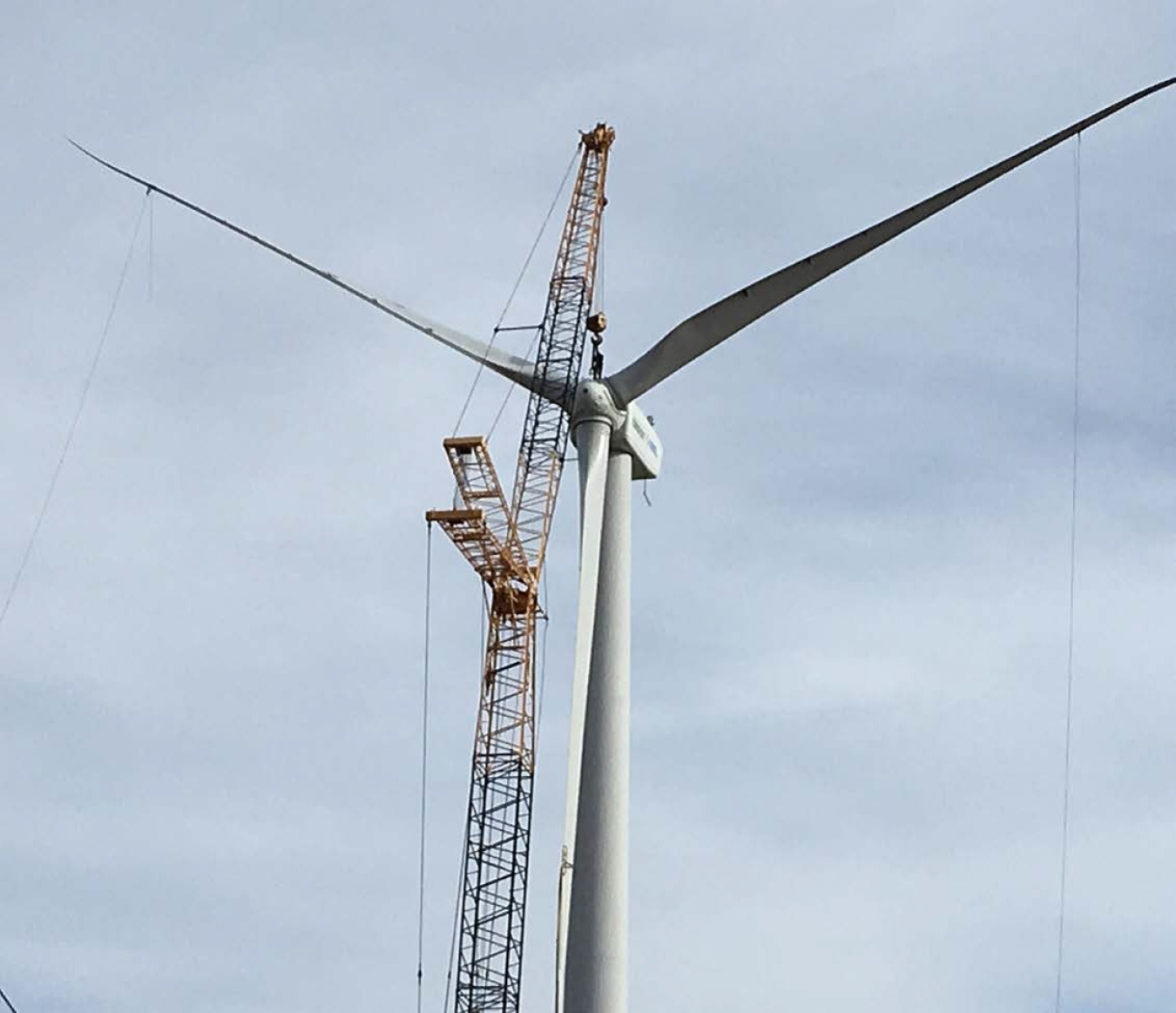Although wind energy costs have declined, premature drivetrain failure still can lead to higher-than-expected turbine operation and maintenance costs.
Wind Energy Technologies Office
May 8, 2018
Installation of the drivetrain as part of the new Drivetrain Reliability Collaborative study to determine the causes of premature gearbox and main bearing failure. Photo by Jonathan Keller, NREL 49494
Although wind energy costs have declined over the past two decades, premature drivetrain failure still can lead to higher-than-expected turbine operation and maintenance (O&M) costs. To help identify the causes of premature failures and ultimately reduce the costs of wind energy, the National Renewable Energy Laboratory's (NREL's) Drivetrain Reliability Collaborative is investigating operational conditions most likely to cause drivetrain failures.
As part of this research, NREL researchers recently installed a new gearbox and main bearing in the U.S. Department-of-Energy (DOE)-owned GE 1.5-megawatt wind turbine at the National Wind Technology Center (NWTC). Researchers will be assessing the Winergy 4410.4 gearbox and SKF SRB-Wind main bearing to understand the true operating conditions of the turbine's drivetrain.
Researchers placed instrumentation within the Winergy gearbox to help understand the causes of bearing axial cracking, which can dramatically shorten the lifespan of turbine bearings. The main bearing is instrumented to help analyze the causes of main bearing micropitting and progressive wear. Both conditions can lead to premature drivetrain failure, which increases the wind industry's O&M costs.
"Failures of gearbox bearings by axial cracking and of main bearings by premature wear are leading to excessive O&M costs for wind plant operators and a higher levelized cost of energy," NREL Researcher Jon Keller said. "This DOE-laboratory-industry validation campaign utilizes the world-class National Wind Technology Center resources to reduce premature failures and related O&M costs."
The NWTC provides unique atmospheric conditions—in particular, high winds—that make the site ideal for this kind of drivetrain validation. In addition, NREL's controllable grid interface allows researchers to examine how grid conditions and faults affect drivetrain loads.
NREL's research is expected to last through spring. Insights gained during this period could potentially enable improvements to gearbox and bearing components or reduce the damaging effects of the turbine's reaction to severe atmospheric and grid conditions.

